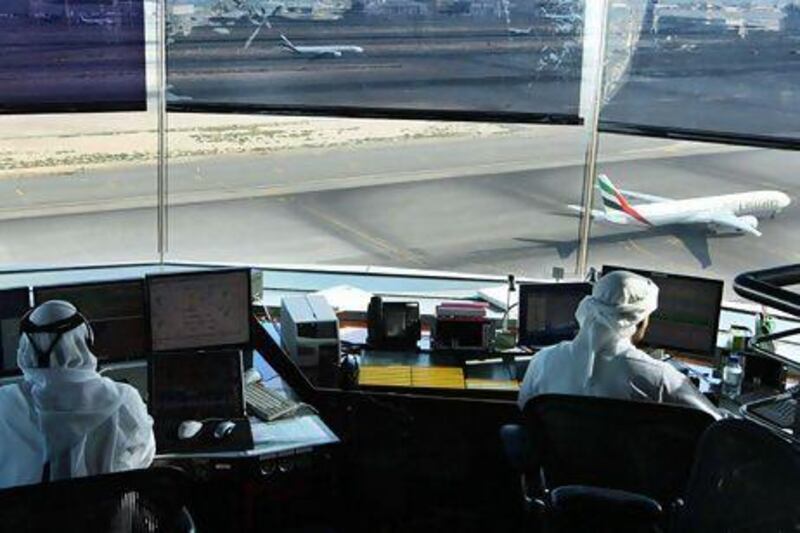Congestion in the skies above the Arabian Gulf is now threatening the growth plans of the regions’ airlines and airport hubs, according to leading aviation industry figures speaking at the first Global Airport Leaders’ Forum in Dubai.
A lack of effective coordination between the various national airspace managements across the GCC and airport administrations is causing flight delays and increases in fuel costs, the forum, sitting as part of The Airport Show, heard.
“The waiting time for planes hovering in the air over the runway, wasting precious aviation fuel is scandalous and air-traffic centres and airports need to work harmoniously across national boundaries to resolve this pressing problem,” Paul Griffiths, the chief executive of Dubai Airports, told the forum, which closed in Dubai yesterday.
Mr Griffiths said it was essential for the Middle East to have an integrated regional airspace solution that could generate the capacity and value that was greatly needed. He said “change was possible in the region given the necessary political will and partnerships with the experts who have done it before”.
Adel Ali, the chief executive of Air Arabia, the Middle East’s largest low-cost carrier, said the biggest problem airlines in the region would face “in the decades to come” was congestion in the air, and he added that while there was enough capacity on the ground, not enough was being done to increase air-traffic management capacity.
“It seems ridiculous to imagine that the same journey, from, let’s say anywhere in the GCC to Dubai, which once would have taken 45 minutes, now takes one hour and 10 minutes, and that is with even faster airplanes – all thanks to the airspace restrictions, adding up to costs and congestions to airport operations,” he added.
Paul Reid, the managing director of the United Kingdom-based Nats, the air-traffic services and solutions company, said efficient air- traffic management (ATM) was key to airports’ ability to meet growing demand.
“ATM is an integral part of the aviation industry and it must be included in the early stages of any airport planning. It is an essential part of the jigsaw. Without effective ATM, an airport’s growth strategy and business model is at significant risk of not being realised,” he said.
Nats, which controls airspace in the UK, guiding about two million aircraft a year through some of the busiest and most complex airspace in the world, knows how important it is for ATM to be harmonised across nations, added Mr Reid.
Nats is working on ATM projects in Qatar and Kuwait, and has worked with Oman, Bahrain and at the new Al Maktoum Airport at the Dubai World Centre to support the safety, efficiency and environmental performance of the countries’ airspace.
“Our industry needs to fully exploit the capability within aircraft systems by linking the ground-based ATM systems with avionics technology within the planes, Mr Reid said. “Nats has the proven systems to help the Middle East achieve success in ATM. We have helped Gatwick to operate 55 flights an hour on a single runaway, and at Heathrow 90 movements per hour on two runways.
“Succeeding in developing ATM is achievable. It has already been done in other parts of world. Not developing ATM will have significant negative impacts on airports in the Middle East and will be a limiting factor for the industry.”
Waleed Youssef, the director for the Middle East region at Turkey’s Tav airports, said that ATM systems needed to be seamlessly integrated into an airport’s design from the planning stage onwards.
“Some European airports neglected to do so, largely concerned at costs they would entail, and they have paid the price for this omission. This is a vital link or the airport is no better than a parking lot,” he said, adding that efficiency, rather than more runways and infrastructure, was the key to making an airport function.





